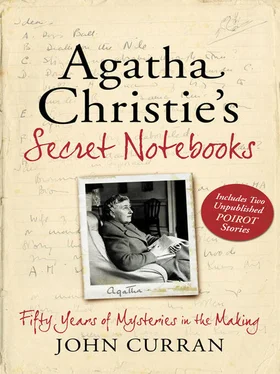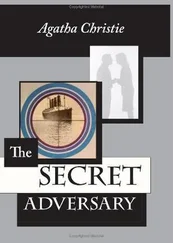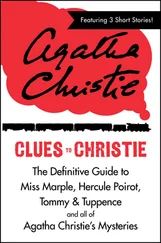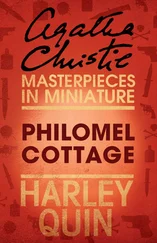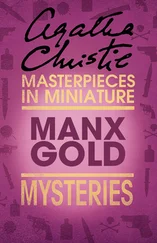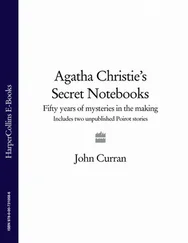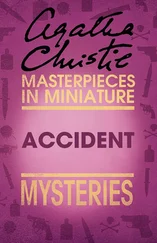3rd excitement is the danger to someone who has found out something (Phillipa?) her boy friend (love interest?) Edmund or Edmund’s rather mysterious friend
Argument II
Mitzi is prime mover—she is ‘Emma’—Shot young man is her husband—this comes out later—she sticks to it—Harry and Phillipa arranged ambush together—second murder is Letitia—(Mitzi very ill?) Poisoning Mitzi suspected—persecuted Polish Girl—sulky—persecution complex—then she nearly dies—Does Leticia make new will?
How Harry and Phillipa arranging the ambush was to work is not elaborated unless it was intended to be part of the game. We shall never know.
In an undated note to Collins, Christie draws attention to the galley proofs and the correct spellings of ‘Lotty’ and ‘enquiries’, reminding them of the importance of ensuring that they are printed incorrectly sometimes—‘Plot depends on this’. There is just a single reference to this in the Notebooks; in Notebook 30 the following appears as an
Idea
inquire enquire—both in same letter (part of it forgery)
When she incorporated this into A Murder is Announced we can see how she used it in a much cleverer way than merely as a forgery. By including the different spellings, on almost
Apart from its sublime detective plot A Murder is Announced is also a convincing picture of an England stumbling out of post-war austerity. We are no longer in the world of butlers and cocktail receptions; there is no dressing for dinner or questioning the lady’s-maid; no weekend guests or alibis provided by nights at the opera. The shadow of rationing and bartering, deserters and foreign ‘help’, ration books and identity cards hovers over the book. In fact, some of the clues come from that very milieu—the seemingly extravagant use of the central heating, the note with the incriminating spelling, the ease of access to houses to assist bartering. Chapter 10 iii also includes a telling conversation between Miss Marple and Inspector Craddock on the changing of the old order: ‘Fifteen years ago one knew who everybody was…But it’s not like that anymore…nobody knows anymore who anybody is.’ And this, with customary Christie ingenuity, is also subsumed into the plot.
Another aspect of this novel that merits attention is the understated presence of the lesbian couple, Miss Hinchcliffe and Miss Murgatroyd. Heretofore, the few examples of gay characters scattered through the novels have been either figures of fun (Mr Pye in The Moving Finger or Mr Ellsworthy in Murder is Easy) or menace (Lord Edgware’s Greek-godlike butler or, some years later, Alec in The Rats ). The picture of the Chipping Cleghorn couple is matter of fact and, as far as the villagers are concerned, unremarkable; and after the murder of Murgatroyd, moving. This is a distinct improvement on the representation of Christopher Wren in Three Blind Mice, three years earlier. He is one her campest creations and is described in the original script as having a ‘pansy voice’; and he is not toned down in the stage version two years after A Murder is Announced, where he remarks on the attractiveness of policemen (Act I, Scene ii). Shortly after the appearance of A Murder is Announced, when Christie was planning Mrs McGinty’s Dead, she intended two of the suspects to be ‘2 young men who live together’, although she abandoned this idea.
consecutive pages in Chapter 18, in documents supposedly written by the same character, she defies her readers to spot the anomaly and, thereby, a major indication of the killer’s identity. It remains one of her most daring clues. The use of both forms in the same letter might have been a bit too daring and the approach she adopts is much more subtle.
Although the Notebooks are short on detail for A Murder is Announced, we are fortunate to have the actual typescript—one of the few known to exist—with copious handwritten notes. An inserted handwritten page toys with changes to the name of the village—‘Chipping Burton? Chipping Wentworth?’—instead of the original Chipping Barnet, the name of the Inspector—‘Cary? Craddock?’—instead of the original Hudson and the name of the victim—‘Wiener?’—instead of the original Rene Duchamps. The original wording of the advertisement was also amended from ‘A Murder has been arranged and will take place on Friday Oct. 13th at Little Paddocks at 6.p.m. Friends please accept this, the only intimation.’ And the title on this typescript is the slightly more cumbersome A Murder has been Arranged. Puzzlingly, the name ‘Laetitia’ appears throughout and every example has been amended, by hand, to plain, and accurate, ‘Miss (Blacklock)’, leading to the assumption that this switch was a late inspiration despite its appearance in the notes—‘Sister "Charlotte" is really her’—as above. Christie would have considered it utterly unfair to refer to ‘Laetitia’ if, in fact, the character is actually Charlotte; hence the amendment to the accurate but ambiguous Miss Blacklock.
The only jarring note in this otherwise near-perfect detective novel is the unlikely denouement in the kitchen of Little Paddocks when Miss Marple practises her hitherto unknown gift for ventriloquism. A feature common to almost all of the Marple titles is the dramatic closing chapter. Like A Murder is Announced, The Body in the Library, The Moving Finger, They Do It with Mirrors, Four-Fifty from Paddington, A Caribbean Mystery, At Bertram’s Hotel, Nemesis and Sleeping Murder all culminate in a theatrical action sequence where the killer incriminates him or herself, usually in a misguided attempt at another murder. In most cases this is because the case that Miss Marple outlines is somewhat short on verification and largely dependent on her intuition, which, however unerring, is not the same as legal proof. Oddly, in A Murder is Announced, above all her other cases, proof is abundant and there are numerous clues to complement Miss Marple’s gifted insight. As Robert Barnard has pointed out in his masterly study of Dame Agatha, A Talent to Deceive, Miss Marple’s reputation as a Great Detective is not improved by her emergence from a broom cupboard at the climax of the novel. This short twopage scene could have been easily amended to omit this embarrassment.
Spider’s Web Premiere 14 December 1954
When she discovers a murdered body in her drawing room shortly before her diplomat husband is due home with an important politician, Clarissa devises a plan to fool the police. She enlists the help of three houseguests, unaware that the murderer is closer to home than she thinks.
There are 20 pages of notes for Spider’s Web, all contained in Notebook 12. The character of Clarissa, written specifically at the request of the actress Margaret Lockwood, is Christie’s finest comedy creation. The play itself is a comedy thriller with sufficient of both to make it a winning combination. It is also a successful blend of whodunit and will-they-get-away-with-it; a surprise killer is unmasked in the closing minutes, maintaining Christie’s reputation for shock revelations, and there are numerous unexpected twists in the subsidiary plot. The will-they-get-away-with-it scenario was not a regular feature of Christie’s output but it is also a feature, to a greater or lesser degree, in her next three plays— The Unexpected Guest, Verdict and The Rats.
The first page of notes is headed:
Act III Spiders Web Laura Finds a Body?
Christie adopts her usual method of assigning letters to the various plot points that follow but, despite the heading, not all refer to Act III.Some of them, as marked, appear in Act II, Scene ii, leading to the suspicion that the acts were rearranged (perhaps in the course of the play’s production) and Act III originally included the previous scene. There are no surprises in the notes and no unexpected plot developments; those that remain reflect accurately the course of the play. With the exception of Sir Rowland Delahaye, who appears in the notes as Sir M, even the names remain the same. I assume that the disappearance of notes for the earlier acts is another casualty of the years.
Читать дальше
Конец ознакомительного отрывка
Купить книгу
